American Ninja Warrior Agility Drill
The objective of American Ninja Warrior is to complete the course by successfully executing each of the obstacles. Contestants with a background in parkour tend to excel in American Ninja Warrior.
Incorporating elements of parkour (otherwise known as free running) is a tremendous way to improve your team's overall athletic ability.
The first obstacle on American Ninja Warrior is called the quintuple steps. The quintuple steps will improve your team's footwork, coordination, and speed.
Instructions
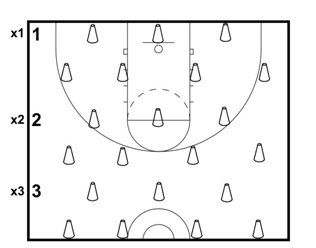
Run this drill about 3-4 times. Set up seven cones per line.
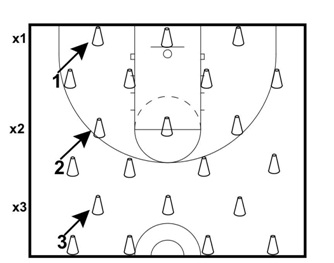
Each line will start out by jumping forward to the right by pushing off with their left foot.
Then, each line will jump forward to their left by pushing off with their right foot.
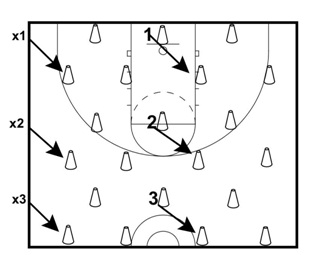
Once the first person reaches the fourth cone, the next person will start.
Once everyone has gone, the first person in the line will jump left.
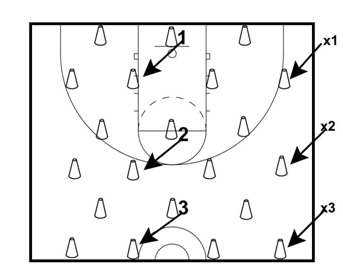
As before, the next person in line will go as soon as the first person reaches the fourth cone.
What do you think? Let us know by leaving your comments, suggestions, and questions. . .
Recommended Training Material:
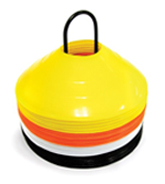
|
SKLZ Agility Cones - 20 2" cones You can use the SKLZ cones for ballhandling drills, agility drills, shooting drills, defining boundaries for drills, creating grids, and much more. Agility cones features: Multiple high- visibility colors for marking training areas, Durable, will not break when stepped on. Includes: 20 cones – 5 each: yellow, black, white & orange, Carry rack for easy transport and storage...(more info) |
|
|||||||||||||||||||||



 Facebook (145k Followers)
Facebook (145k Followers) YouTube (152k Subscribers)
YouTube (152k Subscribers) Twitter (33k Followers)
Twitter (33k Followers) Q&A Forum
Q&A Forum Podcasts
Podcasts